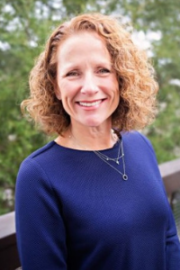
The Year of “C”
2020 has been the year of “C” - challenging, chaotic, concerning and of course, COVID. Day to day life has changed greatly on multiple fronts. Unfortunately, there is no road map as one navigates; no history or experience to guide us on this path. Experts have differing opinions on how to traverse the challenges. As stated by many, the real answer to what’s next is no one knows.
Yet in medicine, the more things change, the more things stay the same. Medicine is indeed essential. Patients are still in need of doctors and arguably more now than ever. As COVID research continues, testing becomes more readily available and the advent of a vaccination approaches, the need for primary care and specialty care for patients is still of great importance. With no definite answer, the challenge of navigating how to provide best of class care is ever present.
Telemedicine
One path that is being traveled more is telemedicine. Although telemedicine has been around for years, approximately one percent of practitioners have utilized this option of care. With the recent lift of restrictions and regulations, this path of providing care has evolved. Physicians and practitioners initially hesitant of the effectiveness of care and the financial uncertainty of telemedicine have now tested the care by fire. Although clinical outcomes are premature, the benefits of virtual care look good. Telemedicine saves money by decreasing overhead, offers more flexibility for both patients and providers due to care being available during nontraditional work hours, doctors are now checking in patients which refines triage, and very importantly, care is offered in more rural areas that may not have had access to care otherwise. Additionally, there is a trend noted that younger patients are reaching out and wanting to be connected, not having any issue with “Zoom” care, especially technically speaking. Once predicated as one patient at a time, a physician now can be in a hundred places in a day, seeing patients from his/her office. "I think the genie's out of the bottle on this one," Seema Verma, the CMS administrator, said. "I think it's fair to say that the advent of telehealth has been just completely accelerated, that it’s taken this crisis to push us to a new frontier, but there's absolutely no going back."
Telemedicine is one argument that supports the thought that patients will frequent physician offices less and less, leading to the need of smaller office space. As with all industry, the effects of COVID in the medical real estate market is uncertain. In addition to fewer visits to a physical office, there is the argument that COVID has proven that some of our support staff can perform job tasks remotely. Realizing that total square footage is the most expensive factor of an office space, the need for efficient design and flow is of great importance, even more so in today’s climate. Therefore, a first thought may be that the need for square footage would decrease.
Argument to Consider
Of course, telemedicine will not take the place of all health care. There are multiple situations and specialties that will continue to dictate face to face care for physicians and patients. Additionally, there are many patients who desire to see his/her practitioner in person, requesting to continue the relationship with a healthcare team to remain as it has been. The demand for medical office space continues to be a reality in the commercial real estate market, however the plans to accommodate such space may look different than what is now considered a traditional medical office.
The challenge with decreasing clinical space is greater than simply a decrease of patient numbers. The challenge is to access and redefine the needs of “today’s care”. This assessment may include an interior change of an office or utilizing present square footage and space differently. With the need and adapting of social distancing, there may be additional space needed for waiting rooms or areas that are used for monitoring post injections, infusions or treatments. In addition to considering patient flow, there is a concern focusing on safe work areas for employees. Those working within the office will need additional space or change of space in order to maintain a safe working environment.
Other thoughts of change for office space may include the need for updated technology such as touchless entry and upgrades in ventilation and HVAC systems. Marketing what makes a clinic COVID friendly could be important to the consumerism of medicine. Innovation in how medicine is delivered is crucial.
Future Possibilities
As practices have faced the turbulence of COVID, another trend may include the change in the structure of practices. Some practices are entertaining the idea of merging together to share overhead costs and in turn, offset certain financial challenges. Independent groups are considering private equity mergers and becoming part of a mega group. With reimbursement changes, practices are realizing changes in coverage of procedures typically being done as inpatient care moving to the outpatient setting. The desire for elective procedures has not been affected by consumer spending as initially feared. These considerations may encourage incorporating ambulatory surgery and/or procedure rooms to clinical space. Regardless of the practice structure, any change encourages and arguably dictates a practice to rethink the efficiency and effectiveness of the medical office.
Again, there are no concrete answers or road maps as the new norm is navigated. The challenge, chaos and concern of COVID has definitely introduced fear and uncertainty. Yet, one positive of COVID may be the assessment of how medicine is delivered, challenging the profession to look at new and innovative ways to provide excellent care. The proverb “necessity is the mother of all inventions” will continue to add insight to the Modern Oath inspired by Hippocrates: “I swear to fulfill, to the best of my ability and judgment, this covenant: I will respect the hard-won scientific gains of those physicians in whose steps I walk, and gladly share such knowledge as is mine with those who are to follow”.
 About the Author
About the Author
Nancy Ferren, RN, BSN is a Medical Real Estate advisor, combining experience in Nursing, Medical Sales and Real Estate. Nancy works with Veritas whose mission is to provide exceptional real estate advisor services to physicians and medical groups based on the core principles of Truth, Integrity and Hard Work. Veritas is located in Birmingham, Alabama, serving clients throughout the Southeast.
